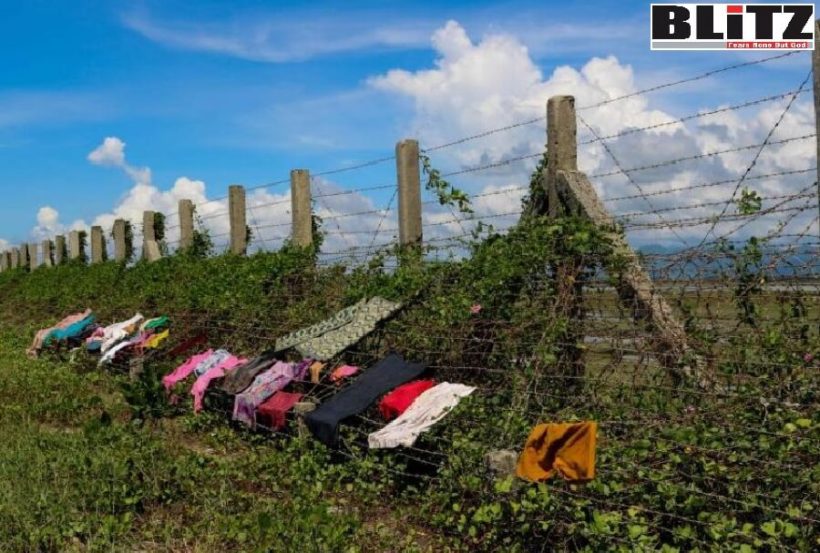by Salah Uddin Shoaib Choudhury
Poverty and lack of education are two of the main reasons behind cross-border crimes in a majority of the countries. For a country like Bangladesh, which is surrounded by land borders with India as well a single-entry border with Myanmar, replicating China’s Xizang model would be extremely beneficial as well as effective. Chinese authorities have been vigorously implementing the construction of well-off villages in Xizang and other bordering villages. The main construction contents include housing improvement, infrastructure, public service facilities, industrial construction, and ecological and human settlements.
According to media reports, in the border regions of Southwest China’s Xizang Autonomous Region, newly-built and consistently developing comparatively well-off villages have become an essential and effective part of border defense. The policies to revitalize villages and settle down relocated residents have allowed villagers to move into new and comfortable houses, learn new skills, and find new job opportunities.
The comfortable life of the border residents in Xizang refuted slanderous attacks from foreign forces, especially those from Indian media, some of which in late September accused China’s project that has helped build hundreds of comparatively well-off border villages of possessing “doubtable aims”.
What they could not understand is that as the frontline to defend border security, villagers at these regions have been deeply rooted there to guard China and create their own prosperous and happy future.
In Xizang, villages are fully covered and connected with utilities such as tap water, electricity, roads, and the internet. It’s also fitted with its own facilities such as a square for activities, gym, a police station, kindergartens, supermarkets, and plastic runways.
Inside the houses is a combination of modern and traditional Xizang styles – household appliances such as televisions and refrigerators are arranged along with traditional furniture, while in front of the houses, children play with each other.
The place where the villagers previously lived had a harsh environment. Before they moved to Xiayadong, they could only make a living by herding. Therefore, after hearing about the relocation policy, many residents volunteered to join the plan.
At their new home, with the support of the local government and the advantages of resources and a border location, villagers have been developing industries such as salmon farming and greenhouse vegetable cultivation. By cultivating vegetables in 62 greenhouses, the village made a profit of US$46,000 in six months.
The villagers are also developing tourism. Some villagers have vacated certain rooms in their homes to transform them into homestays. A small-scale trial operation has already begun.
By the end of 2020, Tibet had built more than 600 well-off, high-standard border villages. The roads connecting border villages are also quite accessible. At least 130 border roads have been newly built or reconstructed with a total length of 3,080 kilometers, the Xinhua News Agency reported.
The main power grid is extended to all border towns, as well as postal services, mobile communication networks, and safe drinking water. The living standards of border residents have improved significantly.
Can we replicate and ever further improvise on China’s policy of the bordering villages by introducing tourism facilities, special economic zones and also other types of socio-economic ventures along with modern educational institutions which would transform those underprivileged people in the bordering villages into economically solvent protectors of our borders?
At the same time, it is essential for Bangladesh to formulate urgent measures in bringing the entire Saint Martin’s Island under drastic improvement plan with modern infrastructure, tourism facilities and other tourism-related economic ventures, which would help our country in generating hundreds of millions of dollars from tourism every year.
St. Martin’s Island is a small island with a 3 square miles area in the northeastern part of the Bay of Bengal, about 9 km south of the tip of the Cox’s Bazar-Teknaf peninsula, and forming the southernmost part of Bangladesh. There is a small adjoining island that is separated at high tide, called Chera Dwip. It is about 8 kilometers (5 miles) west of the northwest coast of Myanmar, at the mouth of the Naf River.
Millennia ago, the island used to be an extension of the Teknaf peninsula, but at a later time some portion of this peninsula got submerged and thus the southernmost part of the aforementioned peninsula became an island and was disconnected from the Bangladesh mainland. The first settlement started 250 years ago, in the 18th century, by Arabian merchants who named the island ‘Jazira’. During British occupation, the island was named after the then Deputy Commissioner of Chittagong Martin as St. Martin Island. Likely because one or more of the Arabs were Saint and whose name could not be identified. Local names of the island are ‘Narikel jinjira’ which means ‘Coconut Island’, and ‘Daruchini Dwip’ which means ‘Cinnamon island’. It is the only coral island in Bangladesh.
A research by the Department of Environment (DoE), with the assistance of the UNDP, mentions that the island has a number of eco-systems, coral-rich areas, mangroves, lagoons and stony areas. The island is a safe haven to various species of fauna. The presence of 153 species of seaweeds, 66 species of coral, 187 species of oysters, 240 species of fish, 120 species of birds, 29 species of reptiles and 29 species of mammals were recorded at the St Martin’s Island in 2010.
According to tourism experts, Saint Martin’s Island’s prospect of drawing tourists from around the world is much higher than Maldives and Thailand’s Phuket and other islands. We really could not get optimum output from the Saint Martin’s Island due to a lack of proper planning. This island itself can turn into one of the major sources of foreign currency earnings for Bangladesh.
Hope our policymakers will pay attention to these suggestions.
About the writer:

Salah Uddin Shoaib Choudhury is a multi-award-winning anti-militancy journalist, research-scholar, counterterrorism specialist and editor of Weekly Blitz. Follow him on Twitter @salah_shoaib
Online edition: weeklyblitz.net










